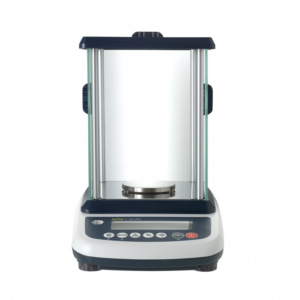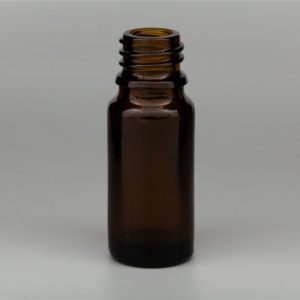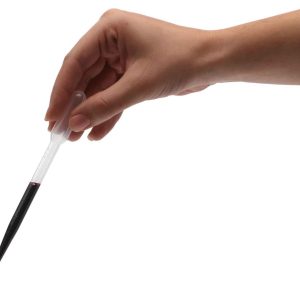Whenever I acquire new materials for my perfumery, my initial impulse is to sit down and embark on the creative process, ensuring that each element is utilized. More often than not, this approach can lead to a chaotic mixture, but within that mess, I discover something priceless. By blending the oils, I am able to analyze their performance, observe how they interact on paper, and take note of their unique qualities. This position allows me to gather insights on how best to utilize materials in general. As a result, this process leads to more prosperous outcomes in the future and reduces wastage of merchandise.
Although the Jean Carles method is commonly recommended for dilution, I personally prefer to rely on my intuition and adjust my awareness accordingly. The only materials I dilute are the ones that are too potent to be used at full strength.
However, if you choose to dilute your materials, you can follow the 10% dilution ratio, either by volume or by mass. For instance, you can mix 1ml of oil with 9 ml of alcohol or DPG (Dipropylene Glycol), or any other solvent you prefer. Similarly, you can dilute 1g of oil with 9g of alcohol or DPG.
To determine the best solvents for diluting each material, you can refer to thegoodscentscompany.com, where you will find comprehensive information about various solvents.
In case you don’t have scales with .001g accuracy and are measuring by drops, keep in mind that roughly 20 drops make up 1ml. However, if possible, it is advisable to use a set of scales for precise concentration measurement.
When making your perfume concentrate, it is recommended to use plastic pipettes and dispose of each pipette after using it with a single oil. This practice prevents cross-contamination of supplies. However, it’s not uncommon for beginners to use glass pipettes, which can be cleaned with alcohol after each administration. As beginners, we all start at the most accessible points of entry in any creative journey, so some leeway is allowed initially. The key is to ignite the artistic flame within you. Avoid anything that might jeopardize your enthusiasm. Eventually, you will progress from walking to running, and ultimately, you will soar. As you gain experience and knowledge, you will naturally incorporate more reliable systems into your work, fostering a deep respect for your art.



ROI, or Relative Odour Impact, is a blending system used in The Perfumers World as a faster alternative to the Jean Carles method. This approach involves assigning values to each oil based on the impact of their smell on the headspace of the perfume.
The headspace refers to the vapor above the liquid (perfume oils + ethanol) that reaches the nose. The impact is represented by a numerical value, indicating the amount of vapor that enters the nose.
To achieve a balance between multiple oils, you can visit the Perfumers World website at https://www.perfumersworld.com/view.php?pro_id=3LL00278 to find the ROI values for each oil. Linalool, for example, has an ROI value of 100. Other materials in this system are allocated values based on whether they are stronger or weaker than Linalool.
To find equilibrium, you can use a simple equation for each oil in your formula: divide 100 by the ROI value. However, it’s important to note that using this process alone does not guarantee a pleasant-smelling perfume. You still need to select the right combination of oils. To get a better understanding, you can start by practicing with two or three oils.
In the case of more volatile oils, known as top notes, the equation is inverted. Instead of dividing 100 by the ROI, you divide the ROI by 100. It is crucial to add less of these top notes to the perfume because oils with values closer to zero evaporate more evenly with the rest of the perfume. Failing to do so can result in a sudden shift in the fragrance, where the top notes evaporate abruptly rather than gradually blending with the rest of the perfume.
For further clarification, you can refer to this instructional video: https://www.youtube.com/watch?v=AlUDf9oe3DA
The recommended concentration levels for different types of perfumes are as follows: Cologne = 3 to 10%, EDT = 10 to 15%, EDP = 15 to 20%, Extrait de Parfum = 20% or higher.
Before you start blending your oils, weigh the empty beaker that you will be using for mixing your formula. Take note of this weight. Once you have completed your perfume blend and are satisfied with the result, weigh the beaker again with the perfume formula inside. To determine the weight of your perfume formula, subtract the weight of the empty beaker from the weight of the beaker with the perfume.
To determine the amount of alcohol you need to add, you first need to decide the desired strength of your perfume. For example, if you want to create an Eau de Parfum, your final perfume should contain 15 to 20% oils and 80 to 85% alcohol.
To calculate this, divide the weight of your perfume formula by different numbers (representing the weight of an overall volume) until you obtain a result ranging from 15 to 20%. For instance, if your perfume formula weighs 7g and you divide it by 30 (30ml), you get 0.23. This means your perfume would have a concentration of 23%. If you are satisfied with this number, subtract 7 from 30, resulting in 23. This indicates that for a 23% strength perfume, you need to add 23g of alcohol to your 7g of perfume oils, resulting in a total weight of 30g or a volume of 30ml.
Example calculation: 7g ÷ 30ml = 0.23 (23%) | 30ml – 7g = 23g | 23g + 7g = 30ml @ 23% concentration
If you prefer to work with drops and want to make a 30ml bottle of perfume, keep in mind that approximately 1ml is equal to 20 drops. Therefore, for a 30ml bottle, you would calculate 30 multiplied by 20, which equals 600 drops. Next, determine the desired strength of the perfume, let’s say 20%, and calculate what 20% of 600 drops is. The answer is 120 drops. To create a 30ml bottle of perfume at a strength of 20%, you would need to add 120 drops of perfume oils to 480 drops of alcohol.
It’s important to note that working with drops is not highly accurate, as different oils have varying levels of viscosity, resulting in inconsistent drop sizes and weights. In my experience, using the drop method can lead to inconsistent results.
For example, I created a perfume concentrate using the drop method for a 30ml bottle of finished perfume. I used 120 drops of oil, but when I divided the weight of the perfume concentrate (1.656g) by the volume of my perfume bottle (30ml), I found that the resulting strength was only 5%, not 20%.
In the end, I decided to work with a 10ml volume, which provided me with a finished perfume at a strength of 16%. This demonstrates that relying solely on drops to measure ingredients is not a reliable practice for making perfume.
When it comes to aroma chemicals, a simple search via http://www.thegoodscentscompany.com/search2.html will reveal potential blenders.
Angelica, Bergamot, Citronella, Eucalyptus, Geranium, Ginger, Juniper, Lavender, Lemon, Lime, Mandarin, Orange, Peppermint, Petitgrain, Pine (Long Leaf), Rosemary, Spruce, Thyme (White).
Chamomile (German), Citronella, Eucalyptus, Galbanum, Geranium, Lavender, Mimosa, Neroli, Rose, Rosewood, Violet.
Bergamot, Citronella, Cypress, Eucalyptus, Frankincense, Geranium, Juniper, Lavender, Lemon, Lemongrass, Lime, Marjoram, Peppermint, Petitgrain, Pine (Long Leaf), Rosemary, Sage (Clary), Spruce, Tarragon, Thyme (White), Ylang Ylang.
Bergamot, Birch (White), Camphor (White),Cedarwood Atlas, Cypress, Eucalyptus, Lavender, Lemon, Rosemary, Sandalwood.
Ambrette Seed, Basil, Bay, Cedarwood Atlas, Chamomile (German), Citronella, Cypress, Fennel, Galbanum, Geranium, Ginger, Jasmine, Juniper, Lavender, Lemon, Lime, Marjoram, Mimosa, Neroli, Orange, Patchouli, Peppermint, Petitgrain, Pine (Long Leaf), Rose, Rosemary, Rosewood, Sage (Clary), Sandalwood, Tea-Tree, Thyme (White), Ylang Ylang.
Bay, Cypress, Fennel, Geranium, Juniper, Lemon, Pine (Long Leaf), Tarragon, Thyme (White).
Bay, Cedarwood Atlas, Citronella, Cypress, Frankincense, Ginger, Laurel, Lime, Mimosa, Myrrh, Peppermint, Pine (Long Leaf), Rosemary, Tarragon, Tea-Tree.
Bay, Bergamot, Camphor (White), Camomile (German), Cypress, Eucalyptus, Fennel, Frankincense, Geranium, Jasmine, Juniper, Lavender, Lemon, Lime , Neroli, Orange, Peppermint, Pine (Long Leaf), Rosemary, Sage (Clary), Valerian.
Angelica, Bergamot, Cedarwood Atlas, Cypress, Eucalyptus, Fennel, Frankincense, Galbanum, Geranium, Jasmine, Juniper, Lavender, Mandarin, Marjoram, Mimosa, Neroli, Patchouli, Rose, Rosemary, Sandalwood, Spruce, Thyme (White), Valerian, Yarrow.
Ambrette Seed, Angelica, Basil, Bergamot, Camphor (White), Cypress, Galbanum, Ginger, Lavender, Lemon, Lemongrass, Lime, Marigold (Calendula), Neroli, Patchouli, Rose, Violet.
Basil, Bay, Bergamot, Birch (White), Camphor (White), Cedarwood Atlas, Chamomile (German), Citronella, Eucalyptus, Fennel, Frankincense, Geranium, Juniper, Laurel, Lavender,Lemon, Lime, Marigold (Calendula), Myrrh, Patchouli, Pine (Long Leaf), Rose, Rosemary, Sage (Clary), Sandalwood.
Ambrette Seed, Angelica, Basil, Bay, Cedarwood Atlas, Chamomile (German), Cypress, Fennel, Frankincense, Geranium, Ginger, Juniper, Laurel, Lavender, Lemon, Marjoram, Peppermint, Petitgrain, Pine (Long Leaf), Rosemary, Sage (Clary), Sandalwood, Spruce, Tea-Tree, Thyme (White).
Bergamot, Birch (White), Cedarwood Atlas, Chamomile (German), Cypress, Eucalyptus, Frankincense, Galbanum, Geranium, Ginger, Juniper, Lavender, Lemon, Peppermint, Rose, Rosemary, Sandalwood, Valerian.
Basil, Camphor (White), Cedarwood Atlas, Chamomile (German), Cypress, Eucalyptus, Fennel, Galbanum, Geranium, Ginger, Juniper, Lavender, Lemon, Lemongrass, Lime, Mandarin, Mimosa, Myrrh, Neroli, Orange, Patchouli, Pine (Long Leaf), Rose, Rosemary, Sage (Clary), Sandalwood, Yarrow, Ylang Ylang.
Angelica, Bergamot, Chamomile (German), Citronella, Fennel, Frankincense, Geranium, Lavender, Mandarin, Mimosa, Neroli, Orange, Rose, Rosewood, Violet, Yarrow.
Ambrette Seed, Angelica, Basil, Bergamot, Birch (White), Cedarwood Atlas, Chamomile (German), Cypress, Eucalyptus, Fennel, Frankincense, Galbanum, Jasmine, Juniper, Lavender, Lemon, Lemongrass, Lime, Mandarin, Marjoram, Mimosa, Neroli, Orange, Patchouli, Peppermint, Rose, Rosemary, Rosewood, Sage (Clary), Sandalwood, Tea-Tree, Valerian, Violet, Yarrow, Ylang Ylang.
Ambrette Seed, Basil, Bay, Bergamot, Camphor (White), Citronella, Eucalyptus, Fennel, Frankincense, Jasmine, Laurel, Marjoram, Neroli, Orange, Patchouli, Rose, Rosemary, Sage (Clary), Sandalwood, Spruce, Ylang Ylang.
Bergamot, Cedarwood Atlas, Chamomile (German), Geranium, Ginger, Lavender, Lemon, Lemongrass, Mimosa, Patchouli, Rose, Rosewood, Sage (Clary), Sandalwood, Ylang Ylang.
Ambrette Seed, Basil, Bay, Bergamot, Birch (White), Cedarwood Atlas, Chamomile (German), Cypress, Eucalyptus, Fennel, Frankincense, Geranium, Laurel, Lavender, Lemon, Marigold (Calendula), Myrrh, Neroli, Peppermint, Petitgrain, Rose, Rosemary, Sage (Clary), Sandalwood, Spruce, Yarrow, Ylang Ylang.
Camphor (White), Cypress, Eucalyptus, Ginger, Juniper, Lemon, Marjoram, Pine (Long Leaf), Rosemary.
Ambrette Seed, Angelica, Basil, Bay, Bergamot, Cedarwood Atlas, Chamomile (German), Citronella, Cypress, Eucalyptus, Fennel, Frankincense, Galbanum, Geranium, Jasmine, Juniper, Lemon, Lemongrass, Lime, Mandarin, Marigold (Calendula), Marjoram, Mimosa, Myrrh, Neroli, Orange, Patchouli, Peppermint, Petitgrain, Pine (Long Leaf), Rose, Rosemary, Rosewood, Sage (Clary), Sandalwood, Tea-Tree, Thyme (White), Valerian, Violet, Yarrow, Ylang Ylang.